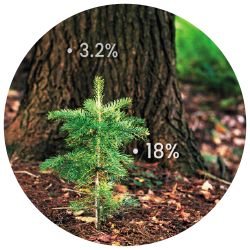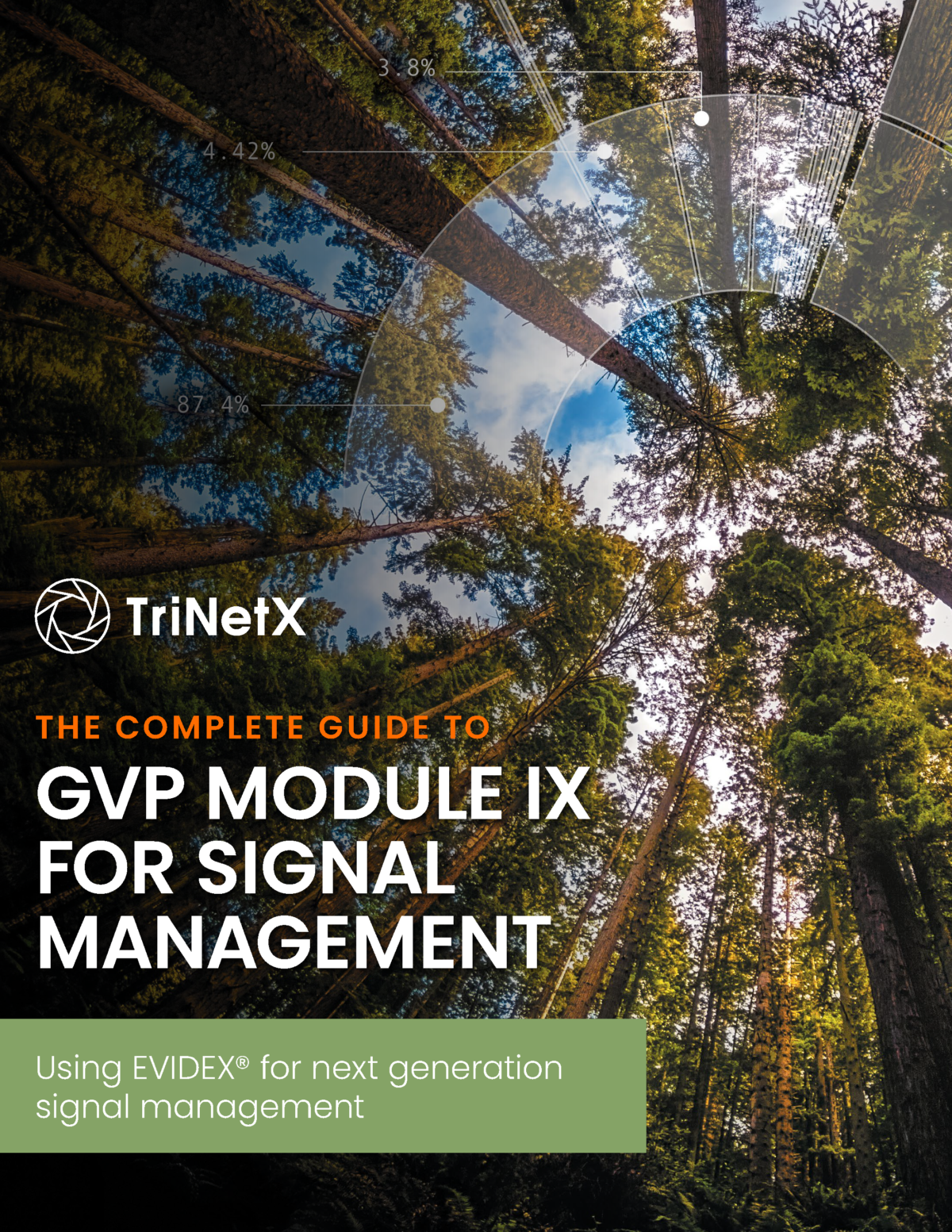DRUG SAFETY
GO BEYOND the limits of legacy.
We’re not waiting for the future of pharmacovigilance – we’re creating it with you.
Discover the combined power of the EVIDEX® pharmacovigilance platform and the TriNetX global network of deidentified real-world data (RWD) and evidence to effectively detect, analyze, and manage signals in a thorough, transparent, and compliant manner.

Detect, analyze, and manage with confidence.
-
Monitor more broadly with greater clarity.
-
Analyze more quickly with greater certainty.
-
Report more accurately with greater ease.
Harnessing Real-World Data for Pharmacovigilance
Built to serve organizations with both high and low volume of signals, the EVIDEX® platform – with access to more than 250 million global patient records -provides a powerful, intuitive system that seamlessly enables you to manage your signal detection and signal management workflows, providing a unified alternative to legacy systems and manual processes.
Flexible and scalable, EVIDEX® can be configured to meet the most complex and demanding signal detection and management requirements.
EVIDEX®
Signal Detection & Refinement
Reduce the burden of false positives by detecting and assessing the sufficiency, strength, and consistency of evidence to focus on what is most relevant and significant.
EVIDEX®
Signal Management
Compliantly manage, report, and share information internally and externally with transparency, clarity, and accuracy.
Explore pharmacovigilance publications and research
Download any or all of TriNetX drug safety resources.
GVP Module IX for Signal Management: The Complete Guide
This guide will summarize the process outlined by GVP IX and discuss how EVIDEX® Signal Management can help organizations efficiently comply.
What’s inside the complete 18-page guide:
GVP IX Signal Detection
GVP IX specifies that common datasets for signal detection include spontaneous reporting (MAH’s own database, national databases such as FDA Adverse Event Reporting System (FAERS), EudraVigilance, and VigiBase), active surveillance, studies, and scientific literature. All of these data sources should be considered depending on characteristics of the product and based on clinical judgement.
Signal detection should include manual review of Individual Case Safety Reports (ICSRs), statistical analyses, or a combination of both. Statistical methodologies are discussed in GVP IX Addendum I – Methodological aspects of signal detection from spontaneous reports of suspected adverse reactions. In short, disproportionality analysis in combination with additional data summaries based on both statistical and clinical considerations should be used.
GVP IX Signal Validation
Signal validation is the process of confirming a new potentially causal association, or a new aspect of a known association, of a drug-event combination. When validating a signal, GVP IX recommends that the following elements should be considered:
- Previous awareness
- Strength of evidence
- Clinical relevance and context
The full module document provides numerous examples of these elements, so they won’t be discussed in detail here. However, having access to robust ICSR data, both for individual cases and in aggregate, is necessary to justify further analysis.
At this stage a decision will be made to determine if the signal is non-validated or that it is in fact a validated signal that is in need of prioritization and further assessment considering all available data.
GVP IX Signal Prioritization & Assessment
After an initial review, a determination is made whether the signal is non-validated or that it is, in fact, a validated signal that needs prioritization and further assessment.
Once validated, a signal must be prioritized based on whether the signals suggest risks with “an important impact on patients’ or public health and/or the risk-benefit balance of the medicinal product”. GVP Module IX (GVP IX) suggests several considerations that should be examined. Ultimately, the prioritization stage should dictate the timeframe for completing activities and actions throughout the signal management process. GVP IX specifically states that flexibility and clinical judgment be applied throughout prioritization and that “appropriate measures” around risk prevention or minimization may be required before a formal assessment of the signal is concluded.
The signal assessment process, which takes place in tandem with Signal Prioritization, considers all available evidence when further evaluating a validated signal. During this process, the safety reviewer looks for additional sources of information that may provide further evidence for or against a causal association or a new aspect of a known association.
GVP IX Quality Requirements
The overarching theme throughout all stages of GVP IX, is that the processes used should be adequately documented and the steps taken in the management of a specific signal should be tracked and auditable. In short, the system needs to provide for transparency into the who, what, why, and when of the process.
The concept of software to solve the burden of tracking safety issues is not new. Legacy systems have outdated user Interfaces, long and costly implementation periods, and outdated analytic tools.
Evidex Signal Management, with a best-in-class user interface, fast validated implementation, and an advanced data-and-analytics-first approach, provides drug safety departments with a new option. The option to not settle for an intimidating user experience, long costly implementations, or a band-aide approach to data and analytics focused workflows.
You no longer need to settle for the status-quo and legacy software.

Ready to take the next step?
Go beyond the limits of legacy pharmacovigilance solutions with unmatched, panoramic view of real-world, global patient data.
Access and Analyze Rich, Secure, Real-Time Data
TriNetX is a global network of healthcare organizations and life science companies, driving real-world research to accelerate the development of life-saving therapies.
From trial operations to evidence generation, we put you at the forefront of discovery.
Clinical Trial Design & Optimization
Datasets & Analytics
Non-US Oncology
Real-World Evidence Generation
Pharmacovigilance & Drug Safety
EVIDEX® is a registered trademark of Advera Health Analytics, Inc., which is a wholly owned subsidiary of TriNetX, LLC.
Request an EVIDEX® demo now:
"*" indicates required fields
